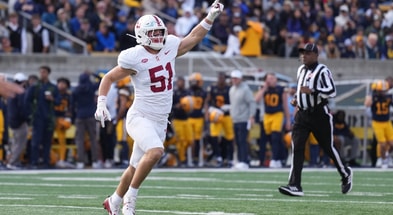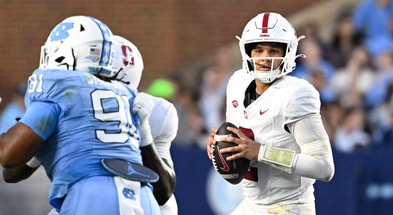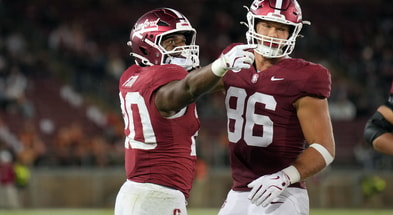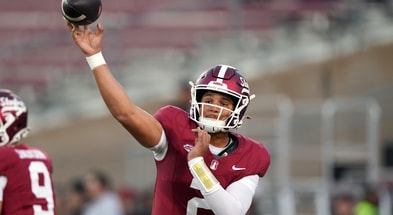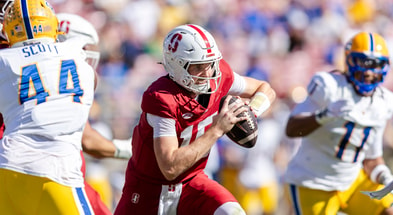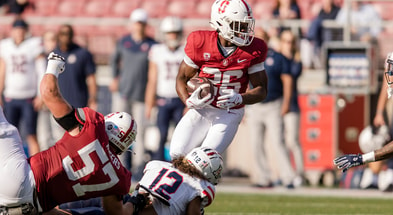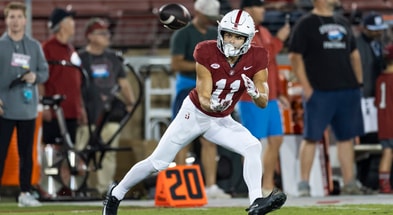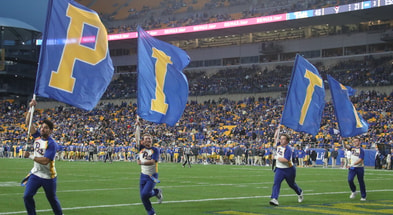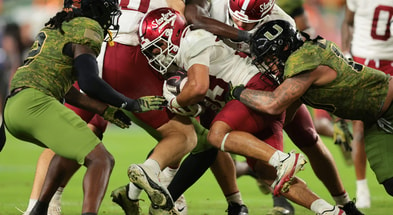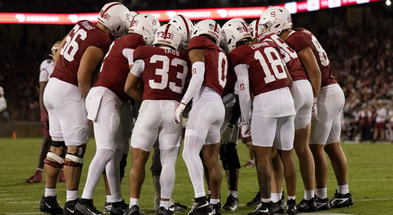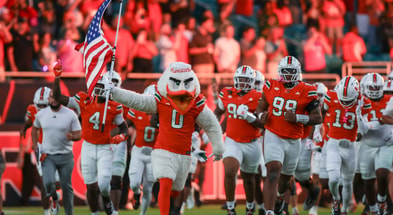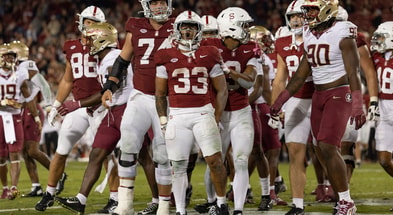Home field advantage in the Big Game: Myth or Material?
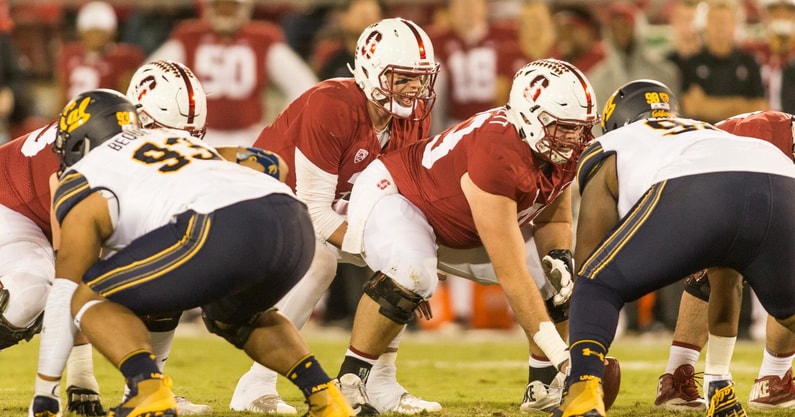
One of the most important aspects of any team sport is the chance to play at home. When you are at home, you get to sleep in your own beds, you have a more comfortable routine, and on top of that you are more accustomed to the aesthetics of the stadium/arena: How the wind blows, where the lighting is the best, where the student section is, and other quirky stuff like that. Plus, you’re just more comfortable playing in a place where you play half your games in and have also spent time practicing in.
That’s why higher seeds in tournaments get rewarded with home court/home field advantage. It’s something you have to earn. It’s also why in regular season matchups teams alternate who is home and who is away. It’s such an important factor that you want to make sure that things are fair as possible on that front.
With the 128th Big Game between Stanford and Cal football coming up on Saturday, November 22nd at Stanford Stadium, I wanted to take a closer look at whether or not home field advantage really matters in this rivalry game. What I found out may surprise you.
First of all, let me just start with saying that I did this data all by hand, so if I’m a skosh off, please forgive me! I started with 1980 all the way up until 2024. I analyzed 1980-2000 and then 2001-2024. And then I combined them.
Since 1980, the home team in the Big Game is 24-20-1 overall. There was a tie back in 1988 in Berkeley. 19-19 was the final score. Because Stanford had won the Axe in 1987, they retained the Axe in 1988 given the tie result. From 1980-2000, if the home team won, they would win by an average of +9.3 points. If the road team won, they won by an average margin of +13.9.
As for 2001-2024, if the home team wins during this current stretch of time, the average margin of victory is +15.1. If the road team wins, the average margin of victory is +15.5.
From 1980-2024, if the home wins, they win by +12.2. During that same stretch of time, if the road team wins, they win by +14.9.
In short, when you look at this data, home field advantage simply doesn’t matter in the Big Game. I mean heck, let’s just look at Cal’s current four game winning streak. In the two wins at Stanford, they won 41-11 and then 27-15. That’s an average victory of 34-13 (+21). In the two wins in Berkeley, they won 27-20 and 24-21. That’s an average victory of 25.5-20.5 (+5). Cal has actually had an easier time retaining the Axe on The Farm than in Berkeley. When you consider how well Berkeley packs the stands for Big Game, that in and of itself hammers that point home.
Now, what might account for this phenomenon? Surely home field advantage in general is something you want to have:
First of all, part of it could just be the nature of the sport itself. I was skimming through the data for the men’s basketball rivalry and in that one, what I noticed was home court advantage had more of an effect. That shouldn’t be a surprise since in basketball, home court/field advantage is widely known to carry more weight than it does in football. So, I think that’s part of it.
A second factor at play is given how close both schools are to each other, the fans are going to have little trouble making the trip across the Bay to support their team. In many cases, fans actually live closer to enemy territory. Stanford and Cal alumni/fans are spread all across the Bay Area.
Third, for much of the rivalry, you’ve just had wide gaps in talent between the two teams. During the Christian McCaffrey/peak David Shaw years, Stanford was the vastly superior team to Cal in terms of talent and ability. During the Marshawn Lynch/peak Jeff Tedford years, it was Cal that had the much more talented roster. Home field advantage matters, but not enough to account for wide gaps in talent. There simply haven’t been many Big Games where both teams were evenly matched in terms of talent. When one team has been up and crushing it, the other has often been down in the dumps.
That all said, the last Big Game where both teams were pretty equal while also being strong was the 2009 Big Game and Cal won that on The Farm 34-28. Cal finished the season 8-5 overall and 5-4 in the Pac-12 while Stanford finished the season 8-5 overall and 6-3 in the Pac-12. Jeff Tedford was coaching Cal at the time while Jim Harbaugh was coaching Stanford. Stanford was ranked No. 14 in the nation going into the Big Game while Cal had been ranked for much of the season, ranked as high as No. 6. If there’s any game you want to point to as home field advantage not mattering, 2009 is a perfect example.
During the current four game winning streak for Cal, the Bears have been mediocre while Stanford has been terrible. That explains why Cal has been winning, but half the games won have been by single digits and only one of those wins was a true blowout (41-11 in 2021). Cal has been the more talented team during this current streak, but they’ve been flawed enough to keep Big Game interesting. I think this year’s Big Game has a similar dynamic to it.
Looking ahead to this year’s Big Game specifically, Stanford comes in at 3-7 overall and 2-5 in the ACC while Cal comes in at 6-4 overall and 3-3 in the ACC. Even though Stanford is 3-1 at home and has played much better than they have on the road, that isn’t reason to think Stanford will win this game. The fact of the matter is, Cal is 3-2 on the road and on paper is simply the better team. As a result, it should be little surprise that Bet MGM opened with Cal favored by 3.0 points.
Hopefully this article has been informative to those that have wondered about whether or not home field advantage matters in the Big Game. If someone tells you this week that they are picking Stanford because the game is at home, feel free to share this article with them and tell them that home field advantage mattering in Big Game is a myth. Now as a far as Stanford’s pass rush and red zone defense is concerned, that is material.
Note: Cardinal Sports Report has you covered for all the latest news on Stanford as they begin the Andrew Luck era.
Join Cardinal Sports Report today for $1 for the first week and enjoy a complimentary year of The Athletic – included with your membership.
Don’t miss out on this great offer!
Sign up here: https://www.on3.com/sites/cardinal-sports-report/join/
CardinalSportsReport.com on Facebook, IG, Threads, X (Twitter), & Bluesky: @StanfordRivals
Ben Parker on Facebook, IG, Threads, X (Twitter), YouTube, & Bluesky: @slamdunk406
Email: [email protected]
Join the conversation on CardinalSportsReport.com

